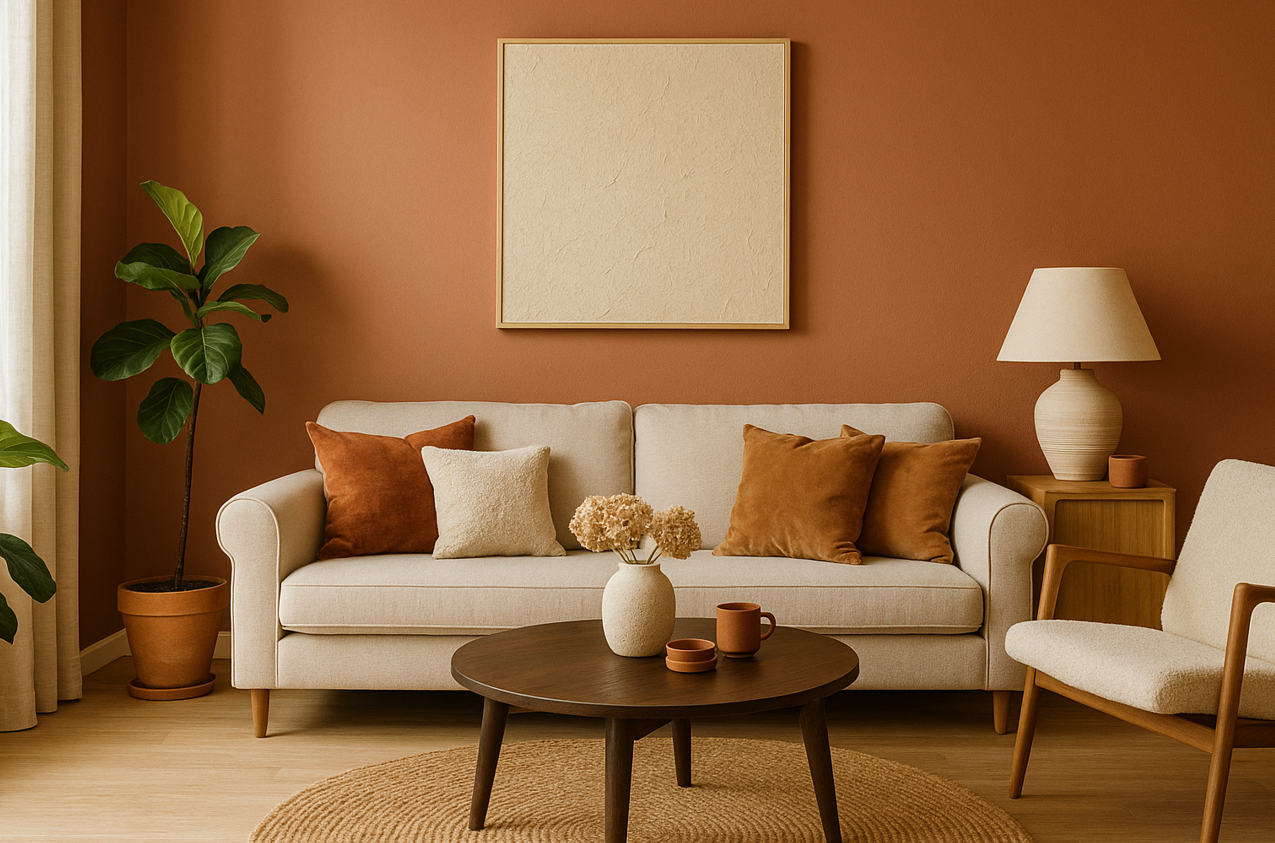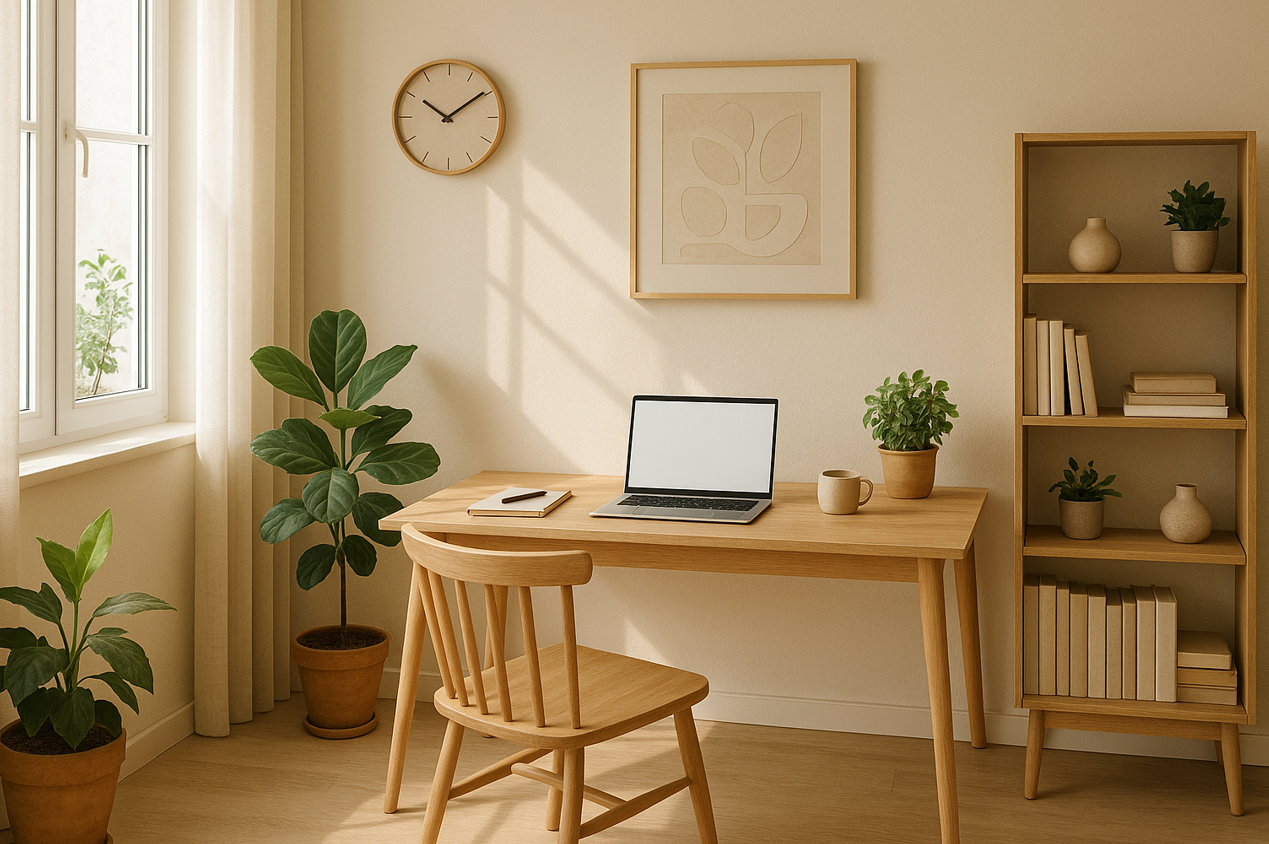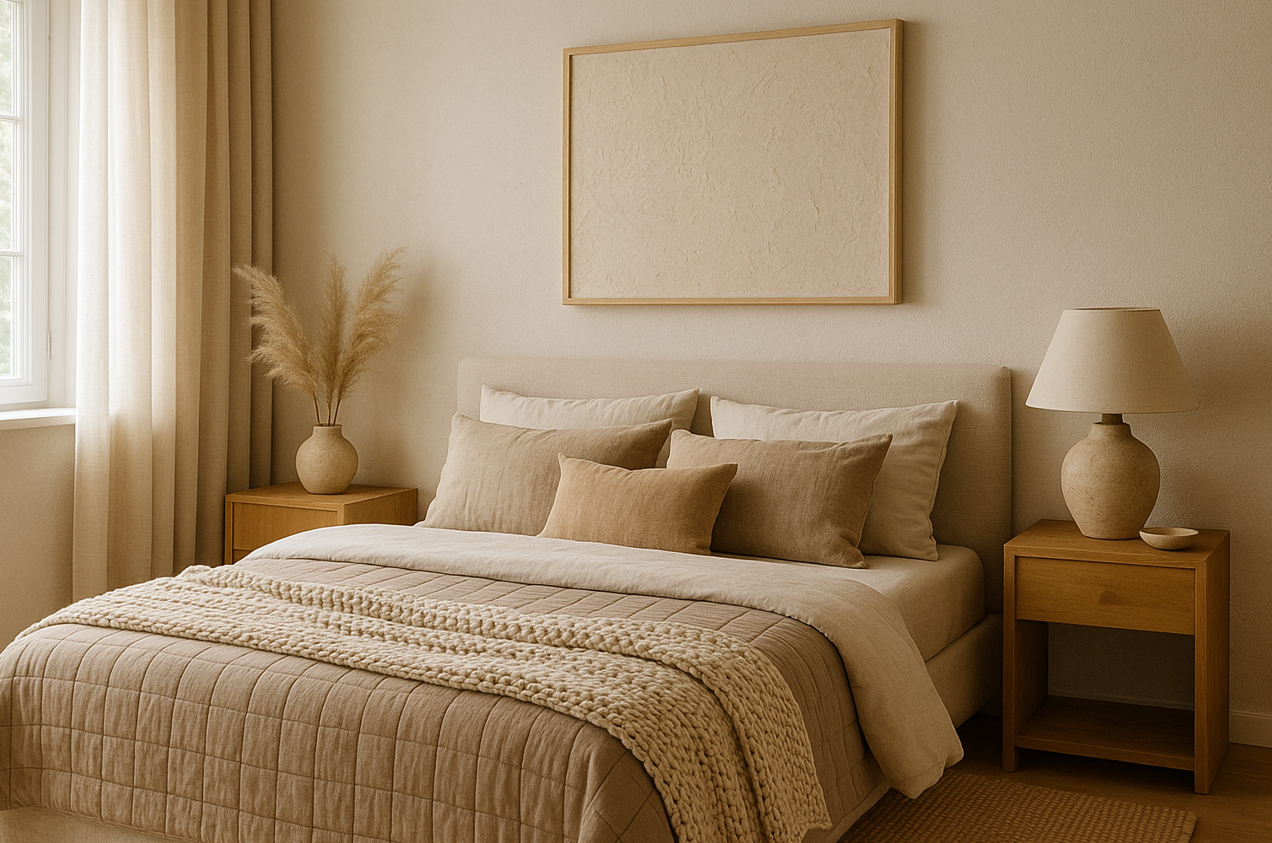Have you ever walked into a space and instantly felt calm, or on the other hand restless and distracted, without knowing why? That invisible pull is design psychology in interior design at work. Every colour, texture, and layout choice in your home quietly shapes how you feel and function each day. The way light enters a room, how furniture is arranged, and even the tones on your walls all influence your mood, focus, and wellbeing. Whether you’re styling a relaxing bedroom or setting up a productive home office, understanding the psychology behind good design can transform how you experience your space.
Colour and Emotion
Colour is one of the most powerful emotional triggers in design. It sets the tone before a single word is spoken. Warm tones like terracotta, caramel, and blush create feelings of comfort and belonging. These are perfect for living and dining areas where connection happens. Cool tones such as sage, blue grey, and stone promote calm and focus, making them ideal for bedrooms or home offices. Neutrals like soft white, sand, and mushroom bring balance and sophistication while allowing materials and textures to shine. According to Dulux’s guide to colour psychology, warm colours can create energy and intimacy while cooler hues encourage focus and serenity.

The Power of Lighting
Lighting is one of the most influential parts of design psychology in interior design. Natural light boosts serotonin and improves concentration. Whenever possible, position reading corners or work areas near windows to make the most of daylight. Layered lighting; including ambient, task, and accent lighting; adds flexibility and lets your home change its mood throughout the day. The colour temperature of your bulbs also matters. Warm white promotes relaxation, while cool white helps you stay alert. Avoid harsh overhead lighting in workspaces. Instead, use diffused lamps that soften shadows and create a calm, inviting atmosphere.

Layout and Flow
The layout of your home shapes how you move, think, and relax. A well-planned layout supports both function and emotion. Open spaces encourage energy and connection, but they can feel overstimulating if not balanced. Use rugs, furniture placement, or screens to define quieter zones. Closed or semi-enclosed layouts promote focus and privacy, ideal for home offices or reading corners. Decluttered design brings mental clarity because storage is not only practical but emotional. When designing layouts for clients, I always begin with one question: What do you want to feel in this room? Once that’s clear, every choice, from furniture scale to sightlines, is made to reinforce that feeling.
Engaging the Senses
Design psychology in interior design goes far beyond what we see. Texture grounds a room. Soft fabrics like linen, boucle, and velvet add comfort, while smooth stone or timber introduces balance and natural rhythm. Scent subtly influences emotion. Notes of linen, sandalwood, or citrus can shift energy and mood within seconds. Even sound matters. Rugs, curtains, and upholstery soften acoustics and create a quieter, more peaceful environment. When every sense is considered, your home becomes more than a place to live; it becomes an experience that supports how you want to feel. Haymes Paint highlights the importance of sensory design in creating interiors that feel authentic, warm, and grounded.

Designing for Productivity
Nowhere is this more important than in your home office. A well-designed workspace balances focus with inspiration and can dramatically boost productivity while keeping you calm. Choose ergonomic furniture with clean lines and natural finishes. Add greenery to purify the air and bring life to the space. Keep your palette neutral and soft with tones like sage, oatmeal, or light timber to reduce visual noise. Personal touches are meaningful but should stay minimal. One piece of artwork or a motivating quote can set the right tone. A home office designed around how you want to feel; calm, capable, and creative, becomes a quiet partner in your success. If you’re refreshing your workspace, our design packages can help you create a home office that blends beauty and purpose, complete with moodboards, supplier schedules, and finishes that enhance both focus and wellbeing.
The Emotional Impact of Good Design
When your home feels balanced, your mind follows. Good design isn’t about perfection or trends; it’s about creating spaces that quietly support your best self. The textures, tones, and light around you influence more than the look of your home. They shape your daily rhythm, your clarity, and your happiness. A beautifully designed home doesn’t just look good; it feels good. It’s calm, intentional, and uniquely yours, a reflection of who you are and how you want to live. Design psychology in interior design reminds us that every choice, from wall colour to furniture placement, is an opportunity to design not just a home but a feeling, because design is more than what you see; it’s what you feel when you walk through the door.
Let’s Bring Your Vision to Life
To learn more about our design packages, contact us now and book a free 15-minute discovery call. We’d love to learn more about your design project and see if we’re the perfect fit to bring your vision to life. Click here to book now.
